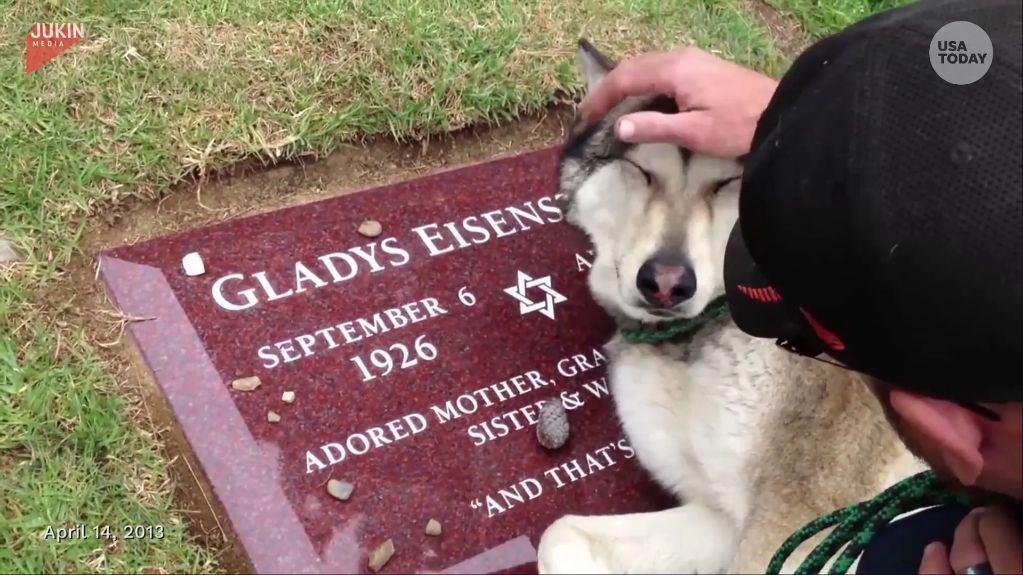Introduction
Recognizing when a dog is nearing the end of life is an important part of being a caring dog owner. This article will provide an overview of the signs that a dog may be dying, so pet owners know what to look for and can make their dog as comfortable as possible during their final days.
Understanding the signs that a dog is dying allows owners to prepare themselves mentally and emotionally for their pet’s passing. It also enables them to adjust their dog’s care, spending quantity time together through activities they enjoy, managing pain, and creating a soothing environment. Recognizing when the end is nearing prevents an owner from unnecessarily prolonging treatment and allows them to make final arrangements.
While losing a beloved pet is incredibly difficult, recognizing the signs of impending death allows owners to be present with their dog during their final days and minimize any suffering. Our dogs rely on us for compassionate care throughout their lives, so it is our responsibility to understand when their life is ending and provide them comfort until the very end.
Physical Symptoms
As a dog nears the end of life from cancer, their body will start to shut down. This leads to some common physical symptoms that indicate a dog is dying. These include:
Lack of appetite – Dogs with end-stage cancer often lose interest in food as they start to feel unwell. Their appetite may come and go, or they may stop eating altogether. This leads to weight loss.

Weight loss – Significant weight loss is a clear sign a dog’s health is deteriorating. Weight loss is both a symptom on its own, as well as the result of reduced appetite and lethargy.
Labored breathing – Dogs may start breathing heavily or panting as lung cancer progresses. Breathing may become loud and raspy as fluid builds up in the lungs. Source
Lethargy/fatigue – Lethargy and fatigue are common as the cancer saps a dog’s energy. They may sleep much more and have little interest in exercise or play. Simple tasks like going outside to relieve themselves can become exhausting.
Weakness/inability to stand – Weakness in the legs and inability to stand or walk are late stage symptoms. Dogs may stumble or need assistance standing up as their muscles waste away.
Vomiting/diarrhea – Some cancers like lymphoma can cause vomiting or diarrhea in the end stages. This contributes to weight loss and lethargy. It may signal there is little time left.
Behavioral Changes
As a dog nears the end of life, they often start to exhibit behavioral changes. One common change is withdrawing from social interactions. Dogs that previously enjoyed being around people and other pets may start to isolate themselves and avoid social situations. They may hide under furniture or in closets, desiring to be left alone.
Dying dogs also frequently lose interest in activities they once enjoyed, like going for walks, playing fetch, or eating treats. They may just lay still for long periods rather than engaging in their favorite pastimes.
Some dogs start pacing restlessly, wandering from room to room. They may seem like they are searching for something but don’t know what they need. Restlessness is thought to be a sign that the dog is uncomfortable or in pain.
Significant changes in sleep patterns are another indicator that the end may be near. Dogs may start sleeping for abnormally long stretches or have difficulty sleeping through the night. They may get up and down frequently or pace at night rather than sleeping.
While these behavioral changes are hard to observe, being aware of them can help you make your dog as comfortable as possible during their last days. Understanding the changes allow you to meet their needs and provide loving comfort when it is most needed.
Pain Management
Dogs with cancer often experience significant pain, so managing their pain is a critical part of palliative care. There are several medication options for controlling cancer pain in dogs:

- NSAIDs like carprofen, meloxicam, firocoxib, and deracoxib to reduce inflammation and pain. These are usually well-tolerated but can cause GI, kidney, or liver issues in some dogs, so monitoring is needed.
- Opioids like tramadol, codeine, hydrocodone, fentanyl, methadone, and morphine. These can provide substantial pain relief but have potential side effects like sedation and constipation that need to be monitored.
- Gabapentin and amantadine are sometimes added to enhance opioid analgesia.
Working closely with your veterinarian is crucial to find the right pain medication protocol for your dog’s needs and stage of disease. The goals are to control their pain, minimize side effects, and improve quality of life without over-sedation. Your vet can adjust dosages and medications based on your dog’s pain levels and reactions.
Some natural supplements like fish oil and turmeric may help mildly reduce pain and inflammation in dogs with cancer. But these typically aren’t strong enough pain relievers to control moderate to severe cancer pain. Medications are usually needed for adequate palliative pain control.
Making Them Comfortable
There are several ways to keep your dog as comfortable as possible during their final days:

Provide soft bedding to help them rest more easily. Memory foam dog beds or plush blankets create a cozy space for them. According to How to Make Your Pet the Most Comfortable at the End of Their Life, giving them their favorite blankets or pillows creates a soothing environment.
Keep your dog warm using blankets or a heating pad under their bed on the lowest setting. Dogs have trouble regulating their body temperature when ill, so keeping them warm prevents shivering and discomfort.
Groom and bathe your dog gently if they enjoy it. Short, therapeutic brushing sessions stimulate blood flow while avoiding matted fur. Give sponge baths instead of full immersion to clean their coat without stress.
Try aromatherapy or gentle pet massages to comfort your dog. Lavender and chamomile essential oils have calming effects when diffused in the room. Light massages stimulate circulation and relieve muscle tension without over-exerting them.
Quality of Life Assessment
One of the most difficult decisions dog owners face is determining when it is time to euthanize their beloved pet. As a dog nears the end of life due to cancer, using a quality of life scale can help owners assess their dog’s current state and determine if euthanasia would be the most humane option.
There are several quality of life scales available, such as the HHHHHMM scale developed by Dr. Alice Villalobos, that allow owners to rate factors like hurt, hunger, hydration, hygiene, happiness, mobility, and more on a scale to quantify their dog’s current quality of life. Online calculators like the Journey’s Pet Quality of Life Scale make it easy to input ratings and get an overall life quality score.
Veterinarians can provide helpful guidance using these standardized quality of life scales. Setting clear guidelines ahead of time can help owners make the difficult decision for euthanasia when the dog’s quality of life declines below a certain threshold. Most importantly, owners should consider what is in their dog’s best interest and not prolong suffering simply for their own sake.
Making Final Arrangements
One of the most difficult decisions pet owners face is determining when it’s time to let a beloved pet go. If your dog is exhibiting end of life symptoms, you may need to start planning for their final arrangements.
There are a few key decisions to make when preparing for your dog’s passing:
Choosing Euthanasia at Home or at the Clinic
You’ll need to decide if you want your vet to come to your home to euthanize your dog or if you prefer to bring them into the clinic. In-home euthanasia allows your dog to pass away in a familiar, comfortable environment. However, the clinic may have better facilities to dispose of remains. Discuss options with your vet to determine what will be least traumatic for you and your dog.[1]
Deciding on Cremation or Burial
After your dog passes, you’ll need to decide on cremation or burial. Cremation allows you to keep your dog’s ashes or scatter them in a meaningful place. Burial lets you create a gravesite where you can visit and memorialize your pet. Check your local laws, as some areas restrict pet burial.
Planning Memorials and Tributes
To honor your dog’s life, you may want to create a memorial space with their collar, photos, paw print, and other mementos. You can also make a donation to an animal charity in their name or plant a tree as a living tribute. Other ideas include assembling a memorial photo book or frame with your favorite pictures of your beloved companion.
Taking time to plan these final arrangements in advance will help provide closure when grieving the loss of your cherished dog.
[1] https://www.aspca.org/pet-care/general-pet-care/end-life-care
Preparing For Loss
Grieving the loss of a cherished pet is a difficult process. It’s important to allow yourself to fully experience your emotions and find healthy coping strategies. Give yourself permission to cry and confide in loved ones. Creating a memorial, like a photo album or paw print art, can help honor your pet’s memory. Practicing self-care through proper rest, nutrition and mindfulness activities will support you through the grieving process.
To help gain closure, spend quality time with your pet, take photographs, obtain medical records, and gather mementos like a lock of fur. If possible, schedule at-home euthanasia so your pet passes comfortably at home surrounded by family. Talk to your vet to understand what to expect during the process. Prepare family members, especially children, for what will unfold. Allow goodbyes in whatever way is meaningful, through gentle touch, kind words, or a favorite treat.
It may help to have a support system in place after the loss, whether that means joining a pet bereavement group or counseling. Remember there is no right or wrong way to grieve. Be patient with yourself as you adjust to life without your pet. The pain lessens with time, transforming into cherished memories.
Supporting Other Pets
Losing a pet that has been part of the family can be difficult for the other pets in the home. Here are some tips for helping other pets cope with the loss:
It’s important to help other pets understand what has happened to their furry companion. Give them the chance to see and smell their deceased friend, if possible, so they have closure. Provide extra affection and quality time with surviving pets to reassure them.

Sticking to regular routines, schedules, and activities will provide a sense of normalcy for pets adjusting to the loss. Take walks, play games, and feed them on time just like you did before. Consistency and predictability are comforting during difficult transitions. Make sure pets get adequate exercise and stimulation.
Some pets may temporarily change behaviors like eating or sleeping habits while grieving. Be patient and offer additional support until they adjust. Monitor them for signs of lasting distress or depression that require veterinary assistance.
Takeaways
In summary, there are several key points to keep in mind when a dog is nearing the end of life due to cancer:
- Look for physical symptoms like weight loss, lack of appetite, weakness, breathing changes, incontinence, or odor which may indicate decline.
- Note behavioral changes like decreased activity, increased sleep, disorientation, anxiety, or irritability as the cancer progresses.
- Focus on pain management and quality of life, working closely with your vet.
- Make your dog as comfortable as possible, meeting their needs for food, water, rest, hygiene, and affection.
- Assess your dog’s quality of life, and make arrangements for euthanasia if their suffering seems too great.
- Prepare for loss by making memories, gathering supplies, and connecting with support.
- Support other pets in the household through this difficult transition.
Resources for readers: